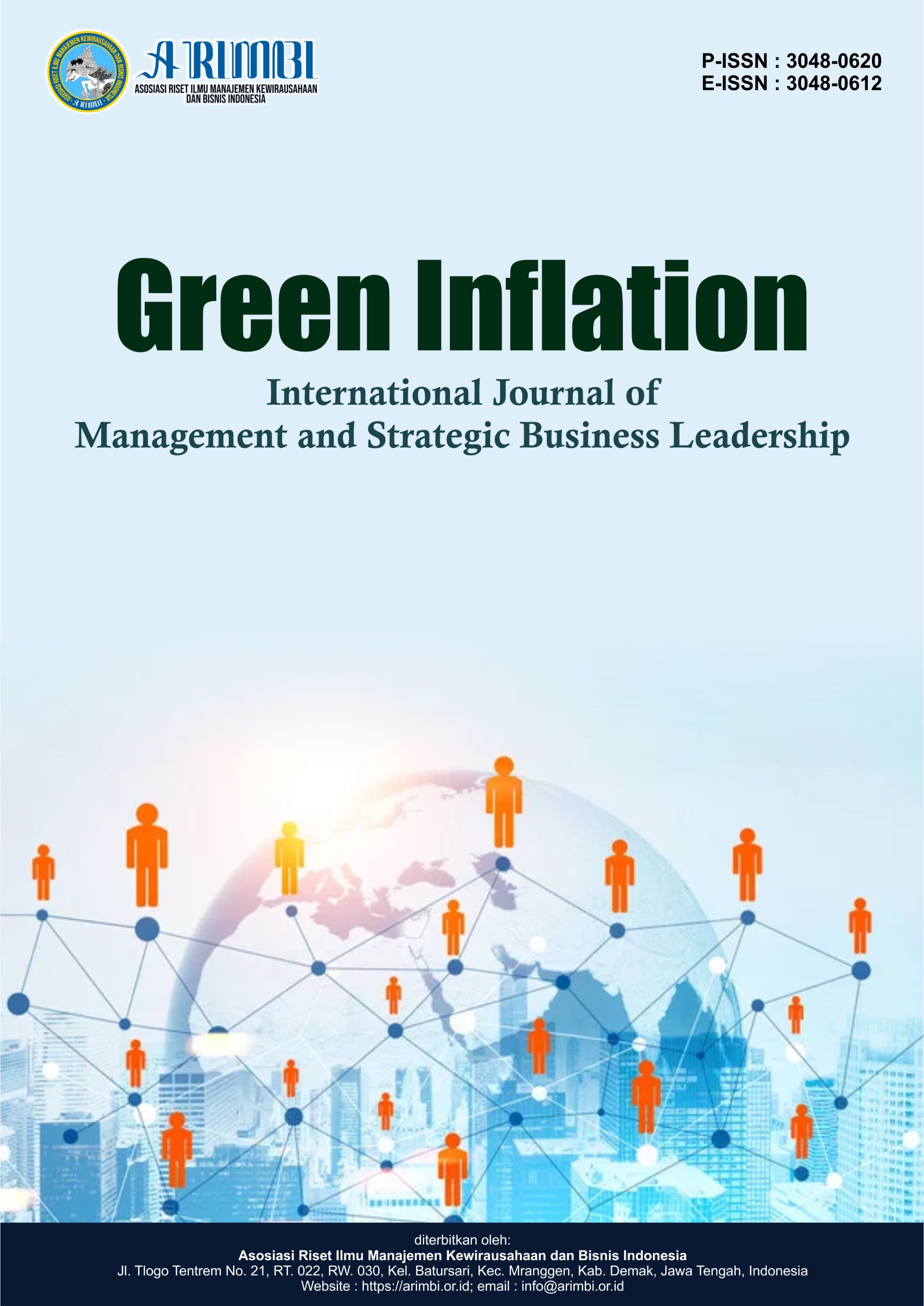Understanding Nurse Behavior And The Factors That Influence It In Receiving Electronic Medical Records
DOI:
https://doi.org/10.61132/greeninflation.v2i2.322Keywords:
Electronic Medical Records, Technology Acceptance Model, Theory of Planned Behavior, User Attitude, Intention of UseAbstract
Background: The implementation of Electronic Medical Records (RME) in healthcare facilities still faces a high failure rate, with more than 50% of RME systems not being used optimally. Sawah Besar Hospital, which began implementing RME in August 2023, recorded 1,500 cases of errors in a year, with 60% of system errors and 30% of user errors. This study aims to analyze the factors that affect the intention of using RME by nurses by integrating the Technology Acceptance Model (TAM) and the Theory of Planned Behavior (TPB). This quantitative research uses a census method by involving 70 nurses as respondents. Data were collected through questionnaires and analyzed using path analysis. The results showed that perceived ease of use, perceived usefulness, subjective norm, perceived behavioral control, and attitude toward use simultaneously affected the intention to use RME (F=77.917, p<0.05). Attitude toward use acts as a mediator in the relationship between perceived ease of use and perceived usefulness to the intention to use RME. These findings have important implications for hospital management in optimizing the implementation of RME through improving technical aspects and forming positive user attitudes.
Downloads
References
Abdekhoda, M., Dehnad, A., & Zarei, J. (2019). Determinant factors in applying electronic medical records in healthcare. Eastern Mediterranean Health Journal, 25(1), 24–33.
Ajzen, I. (1991). The theory of planned behavior. Organizational Behavior and Human Decision Processes, 50(2), 179–211.
Almarzouqi, A., Aburayya, A., & Salloum, S. A. (2022). Determinants predicting the electronic medical record adoption in healthcare: A SEM-Artificial Neural Network approach. PLOS ONE, 17(8), e0272735. https://doi.org/10.1371/journal.pone.0272735
Chang, M. Y., Kuo, F. L., Lin, T. R., Li, C. C., & Lee, T. Y. (2021). The intention and influence factors of nurses’ participation in telenursing. Informatics, 8(2), 1–14.
Cohen, J. W. (1988). Analisis daya statistik untuk ilmu perilaku (Edisi ke-2). Lawrence Erlbaum Associates.
Davis, F. D., Bagozzi, R. P., & Warshaw, P. R. (1989). User acceptance of computer technology: A comparison of two theoretical models. Management Science, 35(8), 982–1003.
Ebnehoseini, Z., Tara, M., Tabesh, H., Dindar, F. H., & Hasibian, S. (2020). Understanding key factors affecting hospital electronic health record (EHR) adoption. Journal of Family Medicine and Primary Care, 9(8), 4348–4352. http://www.jfmpc.com/article.asp?issn=2249-4863;year=2017;volume=6;issue=1;spage=169;epage=170;aulast=Faizi
El-Yafouri, R., Klieb, L., & Sabatier, V. (2022). Psychological, social and technical factors influencing electronic medical records systems adoption by United States physicians: A systematic model. Health Research Policy and Systems, 20(1), 1–12. https://doi.org/10.1186/s12961-022-00851-0
Gesulga, J. M., Berjame, A., Moquiala, K. S., & Galido, A. (2017). Barriers to electronic health record system implementation and information systems resources: A structured review. Procedia Computer Science, 124, 544–551. https://doi.org/10.1016/j.procs.2017.12.188
Hemmatboland, M. (2019). Identification of fundamental issues relevant to implementing electronic health record medication reconciliation: Case of Noor Hospital in Iran. International Business Research, 12(10), 11.
Hsiao, S. J., & Tseng, H. T. (2020). The impact of the moderating effect of psychological health status on nurse healthcare management information system usage intention. Healthcare, 8(1), 1–14.
Ignacio, J. J., Malenab, R. A., Pausta, C. M., Beltran, A., Belo, L., & Tanhueco, R. M., et al. (2019). A perception study of an integrated water system project in a water scarce community in the Philippines. Water (Switzerland), 11(8), Article 1615.
Kamal, S. A., Shafiq, M. I., & Kakria, P. (2020). Investigating acceptance of telemedicine services through an extended technology acceptance model (TAM). Technology in Society, 60, 101212.
Li, E., Clarke, J., Ashrafian, H., Darzi, A., & Neves, A. L. (2022). The impact of electronic health record interoperability on safety and quality of care in high-income countries: Systematic review. Journal of Medical Internet Research, 24(9), e37982.
Miller, M. E. (2014). Electronic health records. Annals of Internal Medicine, 161(9), 679.
Saare, M. A., Mahdi, A. A., Lashari, S. A., Sari, S. A., & Hamid, N. A. (2021). Measuring prevailing practices of healthcare professional on electronic health record through the lens of Iraq. Bulletin of Electrical Engineering and Informatics, 10(2), 970–977.
Scott, T., Rundall, T. G., Vogt, T. M., & Hsu, J. (2018). Implementing an electronic medical record system: Successes, failures, lessons. CRC Press.
Sekaran, U., & Bougie, R. (2013). Research methods for business: A skill-building approach (6th ed.). John Wiley & Sons Ltd.
Sugiyono. (2018). Metode penelitian kuantitatif, kualitatif, dan R&D (Edisi ke-5). Alfabeta.
Tsai, M. F., Hung, S. Y., Yu, W. J., Chen, C. C., & Yen, D. C. (2019). Understanding physicians’ adoption of electronic medical records: Healthcare technology self-efficacy, service level and risk perspectives. Computer Standards & Interfaces, 66, 1–11.
Wang, H., Zhang, J., Luximon, Y., Qin, M., Geng, P., & Tao, D. (2022). The determinants of user acceptance of mobile medical platforms: An investigation integrating the TPB, TAM, and patient-centered factors. International Journal of Environmental Research and Public Health, 19(17), 10499.
Zaleski, J. (2009). Integrating device data into the electronic medical record: A developer’s guide to design and a practitioner’s guide to application. Publicis Publishing. https://books.google.co.id/books?id=GQUV0AEACAAJ
Zin, K. S. L. T., Kim, S., Kim, H. S., & Feyissa, I. F. (2023). A study on technology acceptance of digital healthcare among older Korean adults using extended TAM (Extended Technology Acceptance Model). Administrative Sciences, 13(2), 1–18.
Downloads
Published
How to Cite
Issue
Section
License
Copyright (c) 2025 Green Inflation: International Journal of Management and Strategic Business Leadership

This work is licensed under a Creative Commons Attribution-ShareAlike 4.0 International License.




